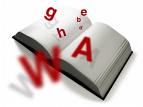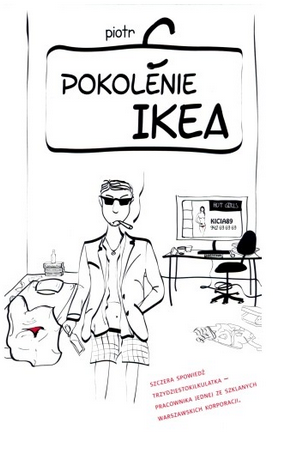The movie and the book- Polish-Russian War.
"The Polish-Ruthenian War Under the White and Red Flag" was published as the debut novel by Dorota Masłowska, published in 2002. The book caused quite a stir in the publishing market. Some were outraged, she delighted others. On the one hand, literary critics recognized the author as a stylistic and linguistic pioneer, on the other hand, they were indignant at kitsch and content vulgarity. Readers of Masłowska either love it, or they hate. There was definitely a buzz. It is impossible to pass by this type of prose indifferently. Regardless of, What style of fiction do we prefer?, should be admitted, that it was a literary event, and the confirmation of this can be, for example, prestigious awards, which were awarded to Masłowska for the book.
Everybody, who read "The Polish-Russian War" must admit, that no one expected the films… Masłowska's book is classified as experimental prose, stemming from postmodernist novels: highly fragmented, of episodic plot twists, disordered cause-and-effect order, and also written in a rather specific language. These types of books are rather difficult to translate into a visual plane. And yet Xawery Żuławski, this time an experimenter in the film world, decided to try the impossible. And I must admit, that he succeeded in this daring feat.
Seems, that the strength of the film lies in trusting the literary prototype. The director does not try to escape from the novel's provenance, on the contrary, he trusted the original implicitly. Żuławski follows the narrative trail indicated in the book. The episodes described by Masłowska pass through the sieve of her imagination, translates into the language of images and creates a film. In addition, trying to highlight the most "tasty" elements, which manifest themselves both in the construction of the character, as well as in single, sometimes very twisted, events. The filmmakers give it all away, even the most irrational parts of the book, including the vomiting scenes, drug addiction in various ways, or beating. They were also not afraid to turn to the aesthetics of kitsch, which is visible in the book descriptions. So we have kitsch music, costumes, music video shots, and even the acting creations are permeated with a certain cliché and trash. From the homogenized pulp of pop culture, they created a certain satire on a contemporary social group.
An interesting aspect, in both the book and the movie, is a kind of self-commentary of the creators, revealed primarily in the form of Dorota Masłowska appearing in the film, as well as making itself felt in the narrative mode of the novel. She is the creator of this "mess", it is in her head that the world of blocks of flats and original characters is created. She is ultimately in control of the reality she has created. scenes, in which the authors perform a kind of deconstruction of the presented world serves one main purpose - to lose the viewer/reader in the world of fictional meanings. We do not know until the end, whether the described story could really happen to our heroes, or are they just passive puppets in another movie, or maybe it's just the invention of a bored teenager with an overactive imagination, who constructs it all in his head?



